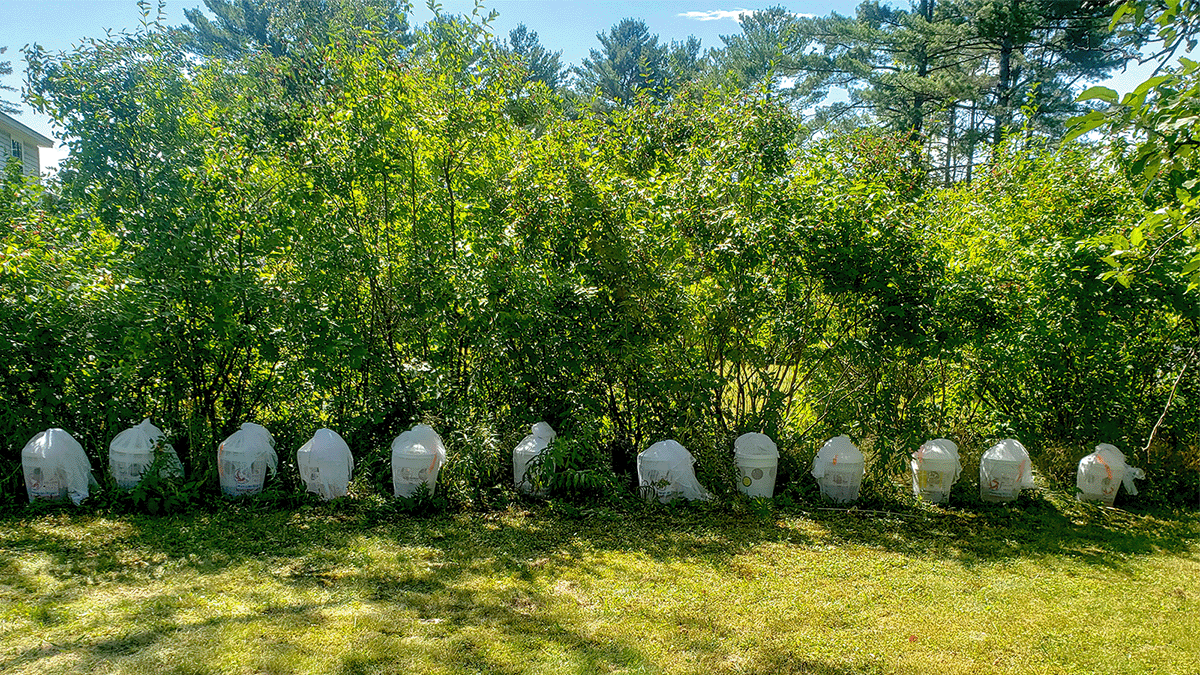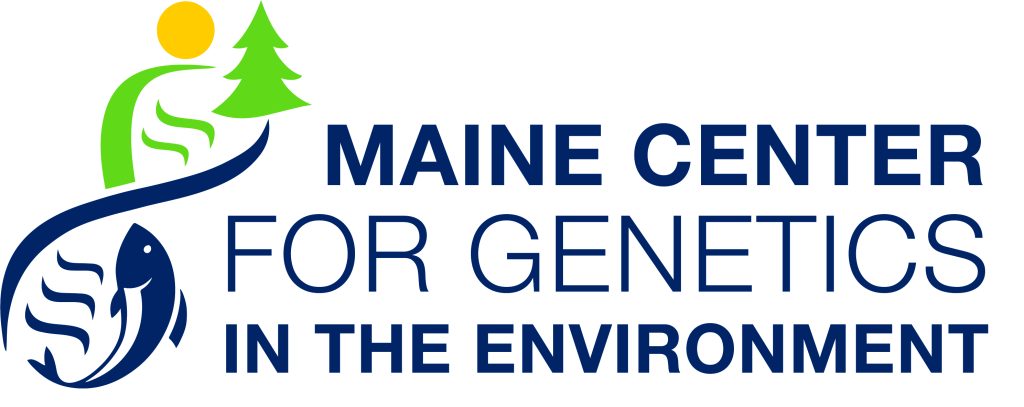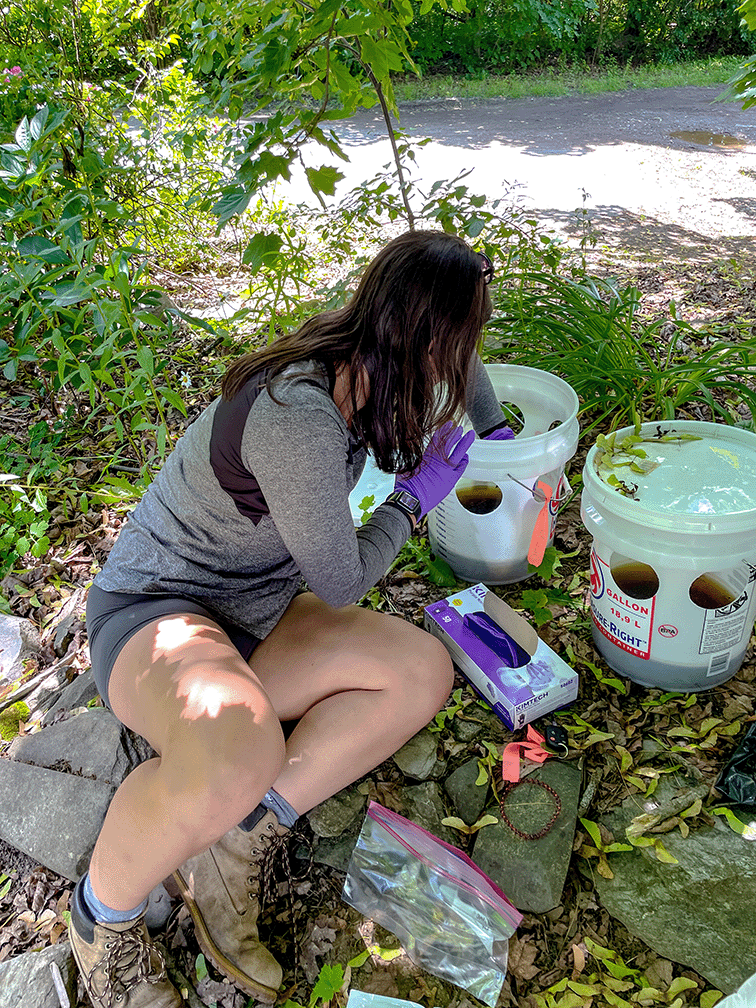
An Introduction to the Maine Center for Genetics in the Environment
By Evan Bartow, Writing Intern
Focused on bringing together researchers across multiple disciplines, the Maine Center for Genetics in the Environment (MGCE) has worked to develop and energize Maine’s genetic research community. MCGE was founded in 2019 in order to further advance the type of research being generated by the $20 million NSF EPSCOR RII Track-1 Molecule to Ecosystem: Environmental DNA as a Nexus of Coastal Ecosystem Sustainability for Maine (Maine-eDNA) project.
Director Michael Kinnison’s vision for MGCE is to make Maine, “A national leader in transformative environmental genetic research, innovation, outreach, and training for the sustainability and wellbeing of natural and human ecosystems and the people that depend on them.” While based at the University of Maine (UMaine), MCGE supports environmental DNA (eDNA) research across the state and throughout a wide range of disciplines that links the research conducted on natural resources, agriculture, public health, and environmental systems.
Allison Garnder (Associate Professor of Medical Entomology at UMaine) is part of a collaborative research project with MCGE examining the applications of eDNA in mosquito research. As a medical entomologist, the majority of Gardner’s research in Maine focuses on the distribution of disease vector species that are of public health concern, namely mosquitos and ticks.
With MCGE, Garnder focuses on the study of mosquitoes and their larval stages. Gardner explained that “the goal of my current research is to develop an eDNA system to detect mosquitoes in their aquatic habitat.” Mosquitos have a four-stage life cycle which consists of an egg, larvae, pupil, and adult stage. The juvenile stages (the first three stages) occur in an aquatic habitat, while the adult stage takes place in a terrestrial environment. Standing water in artificial containers, rivers, streams, lakes, and ponds, are all examples of aquatic habitats that mosquitoes tend to occupy, and most human interactions will occur in their final adult stage.
To study disease vector species, most entomologists develop methods to conduct surveillance. Gardner explained that, “Mosquito surveillance in general is of interest because there is a strong correlation between the abundance of disease vectors and the likelihood of disease occurring in human populations.” Some invasive species of mosquitoes that occur in New York and southern New England are of particular concern as these species begin to migrate northward, making the process of mosquito surveillance more important than ever. The introduction of new invasive species will elevate the level of public health concern as new diseases and new species are introduced into the northern population.
When conducting surveillance, previous research has focused on trapping adult mosquitoes due to their higher level of human interaction. However, the process of trapping an adult mosquito can be laborious and expensive due to the difficulties in catching and identifying the species of mosquito. Hoping to reduce the challenges associated with mosquito surveillance, Gardner is testing the application of eDNA collection to the study of juvenile mosquitos. If researchers are able to detect the presence of juvenile mosquitos, it would simplify the process of applying insecticides or control interventions to aquatic habitats.
Gardner examines the use of eDNA tools by collecting water samples from artificial containers, which were then infused with a nutrient solution that attracts mosquitoes. To test the effectiveness of eDNA collection, Gardner placed a set amount of mosquito eggs in some containers to see the minimum number of eggs that could be detected. Hoping to determine the density and time of incubation that mosquito eggs need for eDNA detection, the results of Gardner’s research will help determine the best techniques to maximize mosquito eDNA yield.
Currently processing the results of the study, Gardner is already beginning to see the potential future implications of her research. Due to the large public health concern about disease-carrying insects, the development of optimal eDNA collection methodologies will improve future mosquito surveillance and mitigate the spread of disease. Gardner believes that development of eDNA collection techniques can potentially be expanded to other disease carrying insects such as ticks. The application of eDNA research in the study of disease vector species is a new area of research with many future opportunities that will soon be explorable.
Gardner explained that “MCGE has opened her eyes and interest into this field.” By collaborating with MCGE, many potential opportunities for research became available for herself and the students in her lab. The use of eDNA in medical entomology is a relatively new area of research with many future opportunities and pathways that are available through MCGE.
“I have really enjoyed the collaboration with MCGE because I have the freedom to name my crazy ideas and have a realistic conversation about how these might be possible,” Gardner explained. “MCGE is very open-minded about the possibilities of research that can be accomplished using genetic techniques. The directors of MCGE have a huge wealth of knowledge and information about ways that I can think about problems using a different approach.” Looking to the future, Gardner plans to continue to collaborate with MCGE due to their plethora of knowledge on environmental genetics, supportive atmosphere, and desire to develop new research methodologies.
Gardner’s work with MCGE is just one example of how the center is making a difference in environmental research, as MCGE focuses on pushing the boundaries of current genetics research and expanding the capabilities of environmental geneticists. Covering a wide range of topics, MCGE has facilitated research for both marine and terrestrial environments that include species of all kinds.
One of the main goals of MCGE above all else is to ensure the evolution of genetic research in Maine ecosystems to guarantee better health conditions, as well as providing researchers an environment where societal and ecosystem needs are met. Micheal Kinnison stated, “Our goal is to leverage environmental genetics to benefit people from all walks of life, communities, and industries, including those that have historically lacked access to genetics, genomics, and evolutionary resources, or even been disadvantaged by their misapplications.”
As eDNA and genetics research continues to grow throughout the state of Maine, MCGE will continue to lead the way through their new research area. The development of this organization has expanded the opportunities available for researchers, created a national leader in environmental genetic research, and developed a growing number of collaborative partnerships.



